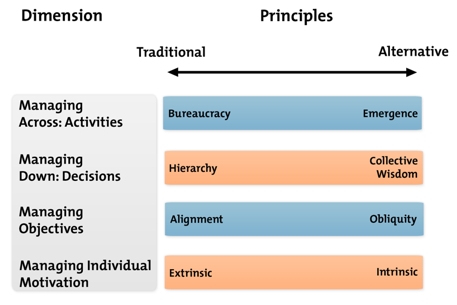Birkinshaw's Four Dimensions of Management
Developing an Appropriate Management Model

© iStockphoto
LisaValder
The old vs. the new.
Price, specialization, quality, and service – these are just some of the ways that you can gain an advantage in your industry.
But have you ever thought that you could be more successful by tailoring your organization's approach to management to fit your business strategy?
You can explore this with the "Birkinshaw's Four Dimensions of Management" model. We'll look at the four dimensions in this article, and we'll explore how you can use them to develop a more effective management model for your business.
About the Four Dimensions
Julian Birkinshaw, Professor of Strategic and International Management at the London Business School, published his Four Dimensions of Management in his 2010 book, "Reinventing Management."
The framework (see Figure 1, below) highlights four dimensions that represent key management processes and practices.
Each dimension has two opposing principles – these principles are "assumptions or beliefs about the way something works or should work." These principles underpin the routine actions that your organization's managers take.
The principles on the left side of each dimension are traditional principles: these are the approaches to management that organizations have used for many decades. The principles on the right are alternative principles: these are newer ways of thinking about management.
Figure 1 – Birkinshaw's Four Dimensions

You can use the framework to think about the approach to management that you're currently using, and to explore whether you can develop a more effective management model – one that suits your strategy and the way that you want to do business.
Let's look at each dimension, and the corresponding principles, in more detail.
1. Managing Across: Activities
This dimension relates to how managers coordinate activities with people over whom they have no direct control. The opposing principles are...
Access the Full Article
This article is only available in full within the Mind Tools Club.
Learn More and Join TodayAlready a Club member? Log in to finish this article.


